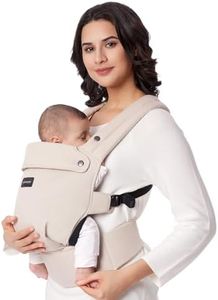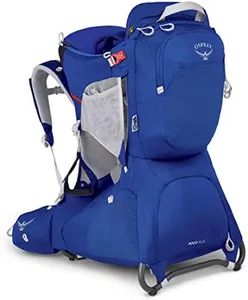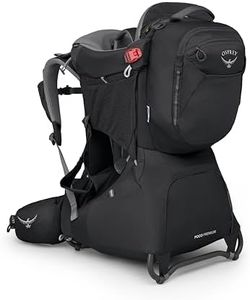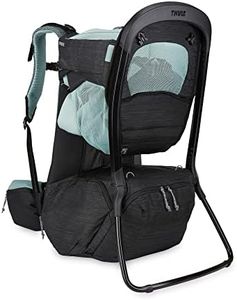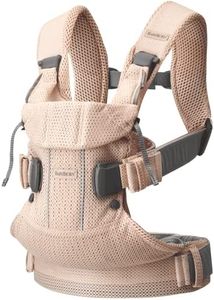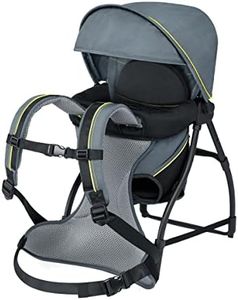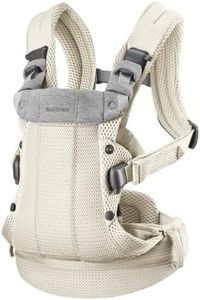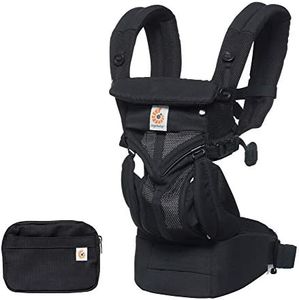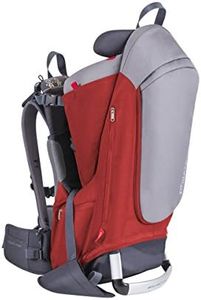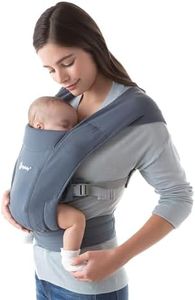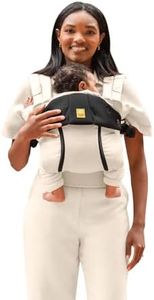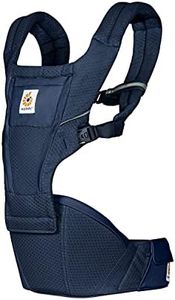We Use CookiesWe use cookies to enhance the security, performance,
functionality and for analytical and promotional activities. By continuing to browse this site you
are agreeing to our privacy policy
10 Best Backpack Baby Carriers
From leading brands and best sellers available on the web.Buying Guide for the Best Backpack Baby Carriers
Choosing a backpack baby carrier is all about finding a balance between safety, comfort, and practicality for both you and your child. It's essential to look for a carrier that fits your body well, supports your baby securely, and is suited to the types of activities you're planning—whether it's everyday walks or long hikes. By understanding the key features, you can ensure both you and your baby have a safe and enjoyable experience.Weight CapacityWeight capacity refers to the maximum recommended weight the carrier can safely hold, usually including both your baby and any gear you might carry in its pockets. This is important to ensure safety and comfort for both the wearer and the baby. Weight capacities typically fall into ranges like up to 25 pounds for infants, 25–40 pounds for toddlers, and above 40 pounds for larger kids. To pick the right one, consider your child’s current weight and how long you want to use the carrier as your child grows.
Fit and AdjustabilityFit and adjustability indicate how well the carrier can be adjusted to fit different wearers, accommodating various body sizes and shapes. A carrier with lots of adjustment options, like adjustable shoulder straps, hip belts, and back panels, can be shared between caregivers and ensure even weight distribution. If you’re the main caregiver, make sure it fits your frame comfortably; if you'll swap between adults, look for maximum adjustability.
Safety HarnessThe safety harness secures your baby inside the carrier and helps prevent falls or slipping. There are usually three- or five-point harness systems. A five-point harness offers more security, especially for active use, while a simpler harness may be fine for lighter walks. If you plan on hiking or being quite mobile, choose a carrier with a robust safety harness.
Comfort and PaddingComfort and padding refer to the softness and support built into both the baby's seat and the wearer's contact points, such as the shoulder straps and hip belt. Thicker padding and ergonomic design help prevent soreness during long use. For short strolls, minimal padding may be enough, but for hikes or extended outings, substantial, breathable padding is important.
Ventilation and MaterialsVentilation and materials relate to the fabrics and their ability to keep your baby and you cool. Good ventilation prevents overheating, especially in warm weather or during strenuous use. Carriers made from mesh or moisture-wicking fabric tend to be more breathable. If you’ll use the carrier outdoors in different seasons, choose materials that suit your typical climate.
Storage OptionsStorage options are the pockets, compartments, and loops for stowing baby supplies, water, and personal items. Some carriers offer large storage spaces, handy for hikes or day trips, while others are simple with minimal pockets for light use. Consider how much you'll need to carry besides your child—select a carrier with the right amount of storage for your plans.
Ease of UseEase of use describes how simple it is to get your child in and out, make adjustments, or pack the carrier away. Some carriers have more complex harnesses or adjustments, which may be worthwhile for certain features but harder to use quickly. If you’ll often put the carrier on solo or need to act quickly, prioritize straightforward designs.
Sun/Rain ProtectionMany carriers include built-in sunshades or rain covers to protect your child from weather. This is especially crucial for outdoor adventures. If you’ll mostly be outside, choose a model with integrated protection, but for mainly indoor or fair-weather use, this may be less critical.
